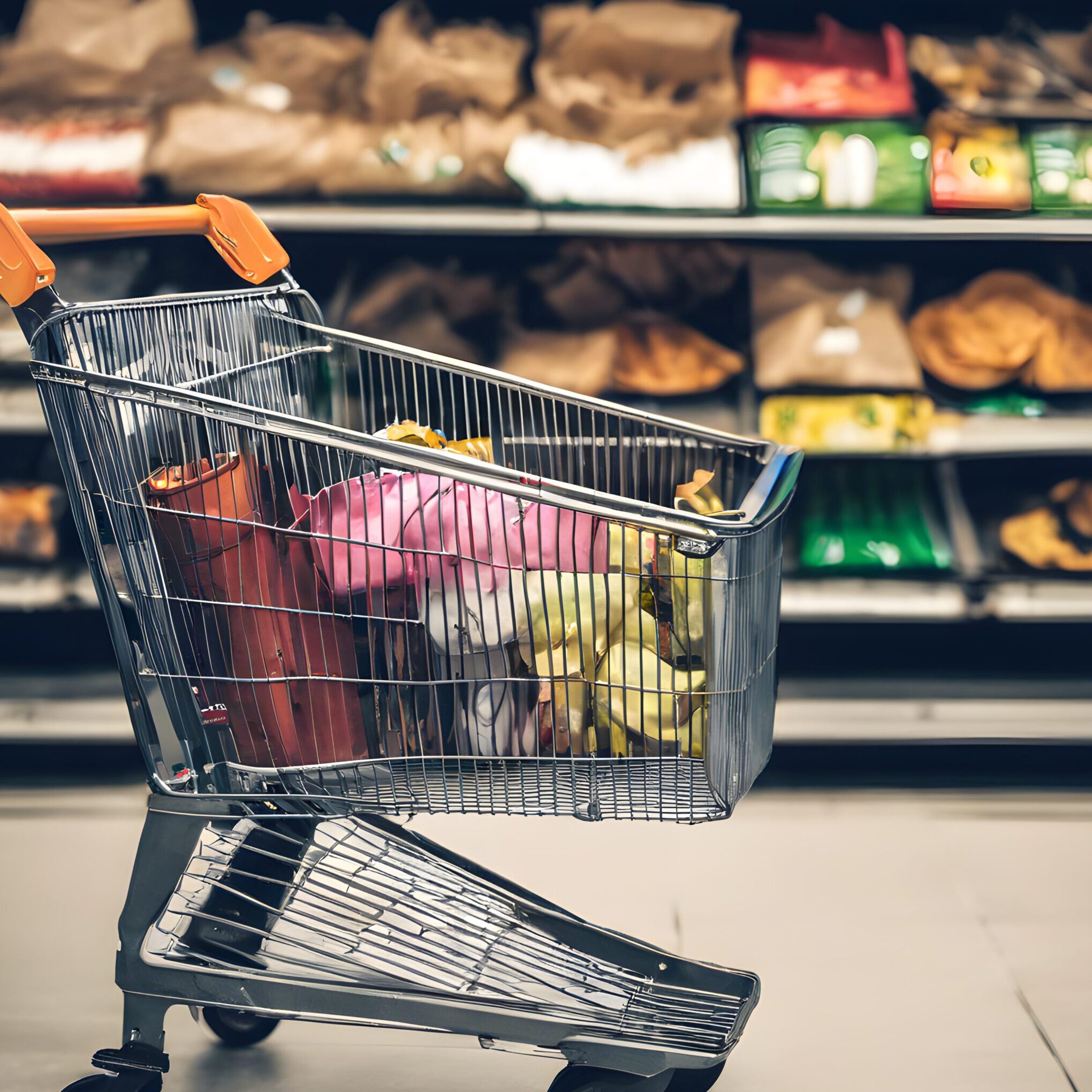
Inflation Rises to 2.6% in November
In November 2024, inflation in the UK rose to 2.6%, marking a slight increase from the previous month’s 2.5%. This uptick, though modest, is significant because inflation has a wide-reaching impact on the economy, affecting everything from interest rates to consumer spending. For many, a 2.6% inflation rate may seem relatively low, but it still has tangible effects on the cost of living. It also reflects a key balancing act between economic growth and the need to control rising prices.
The rise in inflation, while expected by many economists, is notable for how it reflects ongoing trends in both global and domestic economic conditions. A combination of rising energy prices, food costs, and logistical disruptions contributed to this increase. These factors underscore the complex relationship between inflation and broader economic forces. Understanding the reasons behind this rise provides valuable insights into the future of the UK’s economy and the challenges consumers and businesses will face in the coming months.
This article will explore the causes of inflation, its implications for the UK population, and what the rise to 2.6% means for the country’s economic recovery as we head into 2025.
What is Inflation and Why Does it Matter?
Inflation is the rate at which the general level of prices for goods and services rises, leading to a decrease in purchasing power. In simpler terms, when inflation increases, each unit of currency buys fewer goods or services than before. Inflation is typically measured by the Consumer Price Index (CPI), which tracks the price changes in a specific basket of everyday goods and services. These goods include food, housing, transportation, and medical expenses, among others.
Inflation plays a crucial role in an economy. When inflation is moderate, it’s generally seen as a sign of a healthy, growing economy. However, when inflation rises too quickly or remains persistently high, it can be harmful to both consumers and businesses. For consumers, inflation means that their purchasing power declines, and they must spend more money on the same goods and services. For businesses, it leads to higher production costs, which can be passed on to consumers in the form of higher prices.
The Bank of England targets an inflation rate of 2% as part of its monetary policy. A small deviation from this target, such as the rise to 2.6% in November, is not unusual but requires attention. The central bank adjusts interest rates in response to inflation, using them as a tool to either stimulate or cool down economic activity. If inflation rises too much, the central bank may raise interest rates to curb spending and borrowing, thereby reducing inflation. Conversely, if inflation falls too low, the central bank might lower interest rates to encourage spending and investment.
Inflation, while a natural part of economic cycles, becomes a concern when it significantly outpaces wage growth or outstrips the economic recovery. As we will see, the current inflationary trends are largely influenced by several external and internal factors.
Factors Behind the November Rise in Inflation
The rise to 2.6% in November was driven by several factors, both domestic and global. Let’s break down some of the key drivers:
1. Energy Prices and Seasonal Demand
Energy prices have been one of the major contributors to the increase in inflation. Energy, including gas and electricity, is one of the most essential goods in any economy. As the UK enters the colder months of the year, energy consumption rises, leading to higher demand for heating and electricity. This seasonal rise in demand naturally leads to higher prices for consumers.
On a global scale, energy prices have remained high due to ongoing issues such as supply chain disruptions and geopolitical tensions. For example, natural gas prices in Europe have been rising due to supply shortages and market uncertainty. These higher energy costs feed directly into the broader economy, contributing to the overall inflation rate. While oil prices have shown some volatility, gas and electricity prices continue to rise in response to both domestic and global supply and demand factors.
2. Food Price Inflation
Another significant driver of the rise in inflation is the increase in food prices. Food inflation has been a consistent issue throughout 2024, particularly in the UK. In November, prices for essential food items such as vegetables, meat, and dairy products saw considerable increases. These price hikes were partly due to poor harvests, global supply chain issues, and higher input costs for farmers.
A key factor influencing food price inflation is the disruption in supply chains caused by both the COVID-19 pandemic and the Brexit trade deal. Farmers and food producers are facing increased costs for labor, fertilizers, and machinery. Supply chain bottlenecks, especially in transportation and logistics, have further exacerbated the situation, causing delays and increased costs.
Additionally, the weather has played a role in food production, with poor growing conditions in certain parts of the UK and Europe leading to lower-than-expected yields. This has resulted in higher costs for both consumers and businesses involved in the food industry. These price increases for fresh produce and other essentials directly affect household budgets, contributing to the overall inflationary pressures.
3. Transport Costs
Transport costs have also been rising steadily throughout 2024, contributing to the overall increase in inflation. The price of fuel, including diesel and petrol, is a major factor. While oil prices fluctuated throughout the year, the cost of fuel has remained relatively high. This increase in fuel prices has had a cascading effect on the cost of goods and services, as transportation costs are an essential part of supply chains.
Transport costs also reflect global supply chain disruptions. The shortage of truck drivers, along with delays at key ports, has led to higher shipping costs. Additionally, the Brexit deal has complicated the movement of goods between the UK and the EU, further driving up transportation expenses. Higher transport costs are typically passed on to consumers, leading to increased prices for a range of products, from groceries to electronics.
4. Supply Chain Bottlenecks
In addition to transport costs, supply chain bottlenecks have been a persistent issue. Since the pandemic, global supply chains have faced severe disruptions, from semiconductor shortages to delays in shipping and production. These disruptions have been particularly acute in sectors such as electronics, automobiles, and building materials.
For the UK, these bottlenecks have been exacerbated by the complexities of Brexit, which has resulted in delays at customs and higher costs for businesses that import goods. As a result, the cost of consumer goods has risen, contributing to the overall increase in inflation. In particular, tech products, automotive parts, and construction materials have seen sharp price increases, which filter through to consumers in the form of higher retail prices.
Economic Context: UK’s Economic Recovery Post-Pandemic
The rise in inflation is taking place within the broader context of the UK’s recovery from the COVID-19 pandemic. In 2020, the UK economy contracted sharply due to lockdowns, supply chain disruptions, and global economic slowdowns. However, by late 2023 and into 2024, the economy began to show signs of recovery. Unemployment rates remained low, and wages began to rise in several sectors, signaling a rebound in economic activity.
Despite this recovery, inflation continues to be a major concern, particularly as costs for essentials such as energy, food, and transportation continue to rise. The government has been working to support the recovery with fiscal policies aimed at stimulating growth, but inflation remains a persistent issue. As inflation increases, the real value of wages is eroded, meaning that workers’ purchasing power is diminishing.
For households, this means that even as the economy grows, the cost of living continues to rise, putting a strain on budgets. For businesses, rising production costs are squeezing profit margins, and many are struggling to maintain prices without passing costs on to consumers.
The Role of the Bank of England and Interest Rates
The Bank of England plays a central role in managing inflation through its monetary policy, primarily by adjusting interest rates. When inflation rises above the target of 2%, the Bank typically raises interest rates to cool down the economy. This is done by making borrowing more expensive, which reduces consumer spending and business investment.
In response to the November inflation figures, there has been speculation that the Bank of England may raise interest rates in the coming months. While interest rates have already risen in 2024 to combat inflation, the Bank’s primary concern is to ensure that inflation does not spiral out of control. However, raising interest rates can slow down economic growth, which is a delicate balancing act for policymakers.
In the coming months, the Bank of England’s decisions on interest rates will play a key role in shaping the economic landscape. If inflation continues to rise, more aggressive interest rate hikes may be needed. However, if the economy shows signs of slowing down too much, the Bank may take a more cautious approach.
Forecast for 2025: What Can We Expect?
Looking forward to 2025, economists predict that inflation in the UK will continue to fluctuate in response to various internal and external factors. While the immediate outlook for inflation is expected to be moderate, challenges remain, particularly in the energy and food sectors.
Global supply chain disruptions and geopolitical factors, such as trade tensions and ongoing issues with the EU trade deal, will continue to exert pressure on prices. Additionally, the potential for higher interest rates in 2025 could have an impact on consumer spending and borrowing patterns, which could affect inflation.
However, the UK economy is expected to continue recovering, and inflation should gradually decrease toward the target rate of 2%. Policymakers will likely focus on managing inflation without stalling economic growth, a difficult balancing act that will shape the country’s economic trajectory.
In conclusion, UK inflation rose to 2.6% in November 2024, in line with expectations. This increase, driven by energy prices, food inflation, and transport costs, reflects ongoing challenges in the economy. While inflation remains below the levels seen in the immediate aftermath of the COVID-19 pandemic, it continues to affect consumers and businesses alike.
The Bank of England’s actions, particularly with regard to interest rates, will play a crucial role in managing inflation in 2025. As the economy recovers, inflation will likely remain a key concern, especially for households facing rising costs of living. However, with the right policies in place, the UK could see inflation return to more manageable levels in the coming year.
Feel free to check out our other website at : https://synergypublish.com

